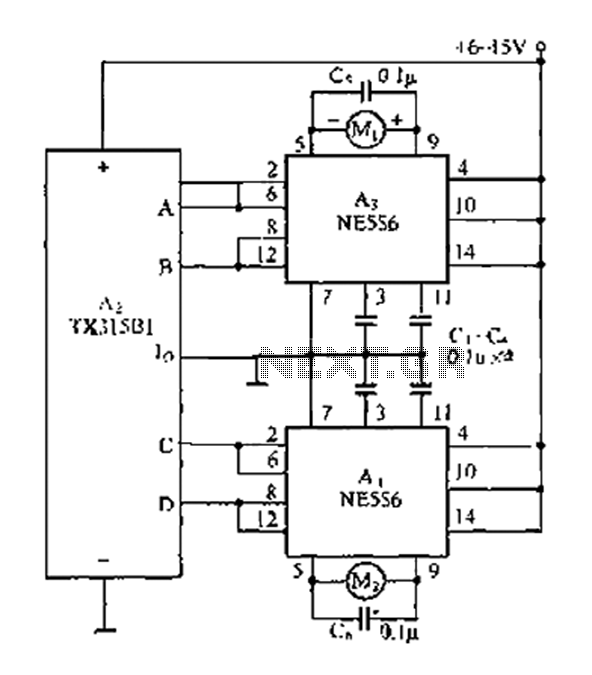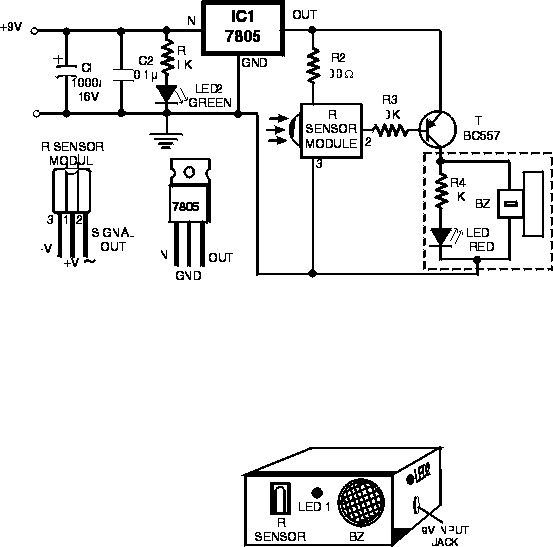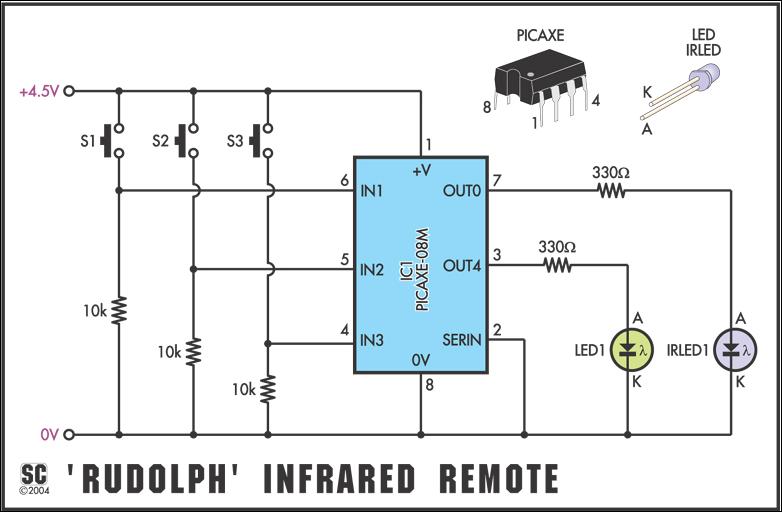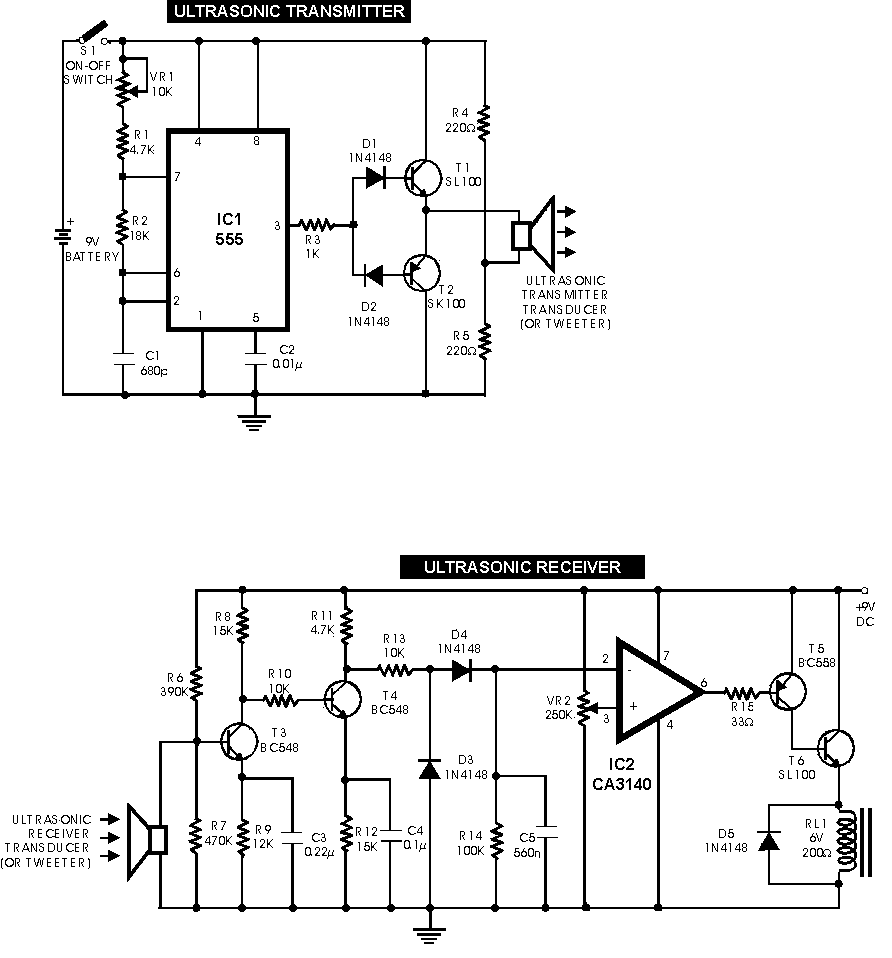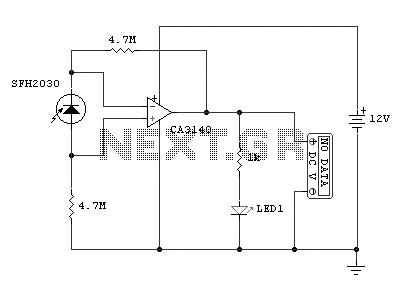
Remote Doorbell Warning Switchs
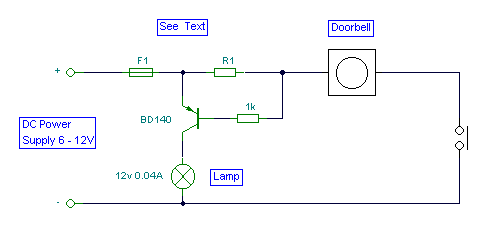
The most challenging aspect of this circuit was determining its title. It can be easy to overlook the sound of a doorbell while watching television; this circuit addresses that issue by providing a visual indication, such as a lamp. Alternatively, an LED can be utilized. Connecting a lamp in parallel with the doorbell could result in additional drain on the doorbell's batteries or transformer. By using a series resistor (R1), the current flow is reduced, which extends the battery life when powered by batteries. The value of R1 is selected to ensure that approximately 0.6 to 0.7 volts is dropped across it, allowing the doorbell to still function. A combination of a 22-ohm resistor in parallel with a 50-ohm resistor was used, ensuring that the doorbell rang and the circuit operated correctly. There was a previous use of an electromechanical counter that recorded each time the doorbell switch was pressed, leading to a humorous memory of receiving more “hits” at the doorbell than on a website.
This circuit serves the dual purpose of auditory and visual notification of a doorbell press, enhancing the user experience in environments where the doorbell's sound may be masked by other noise, such as television or music. The design incorporates a series resistor (R1) to mitigate the additional load that a parallel lamp or LED would impose on the doorbell's power source. The selection of R1 is critical; it must be calibrated to allow sufficient voltage drop while ensuring that the doorbell mechanism remains operational.
In this configuration, the 22-ohm and 50-ohm resistors are strategically combined to achieve the desired resistance without compromising the doorbell's function. The parallel connection of these resistors effectively lowers the overall resistance seen by the doorbell, which helps maintain its operational integrity while allowing for the visual indicator to illuminate when the doorbell is activated.
The visual indicator, whether a traditional incandescent lamp or a more energy-efficient LED, provides a clear and immediate signal that someone is at the door. This can be particularly beneficial in households with individuals who are hard of hearing or in situations where the doorbell's sound may not be easily heard.
Overall, this circuit design exemplifies a practical solution to a common problem, utilizing basic electronic components to enhance the functionality of a standard doorbell system while considering energy efficiency and user convenience.The hardest part for this circuit was the title. It is quite easy to miss the sound of a doorbell if you are watching TV, this circuit gets round the problem by providing a visual indication, i. e. a lamp. As an alternative, a LED could also be used. You could just parallel a lamp across the doorbell, but this would mean extra drain from the doorb ell batteries or transformer. Using a series resistor R1 actually reduces current flow, and if run from batteries, will give them a longer life. The value of R1 is chosen so that about 0. 6 to 0. 7 volts is dropped across it, and the doorbell should still ring. I used a combination of a 22 ohm resistor in parallel with a 50 ohm. The doorbell still rang and circuit operated correctly. I used to have an electromechanical counter that registered each time when someone pressed the switch.
in fact, I remember a time when I had more "hits" at my doorbell then at my web site=:) 🔗 External reference
This circuit serves the dual purpose of auditory and visual notification of a doorbell press, enhancing the user experience in environments where the doorbell's sound may be masked by other noise, such as television or music. The design incorporates a series resistor (R1) to mitigate the additional load that a parallel lamp or LED would impose on the doorbell's power source. The selection of R1 is critical; it must be calibrated to allow sufficient voltage drop while ensuring that the doorbell mechanism remains operational.
In this configuration, the 22-ohm and 50-ohm resistors are strategically combined to achieve the desired resistance without compromising the doorbell's function. The parallel connection of these resistors effectively lowers the overall resistance seen by the doorbell, which helps maintain its operational integrity while allowing for the visual indicator to illuminate when the doorbell is activated.
The visual indicator, whether a traditional incandescent lamp or a more energy-efficient LED, provides a clear and immediate signal that someone is at the door. This can be particularly beneficial in households with individuals who are hard of hearing or in situations where the doorbell's sound may not be easily heard.
Overall, this circuit design exemplifies a practical solution to a common problem, utilizing basic electronic components to enhance the functionality of a standard doorbell system while considering energy efficiency and user convenience.The hardest part for this circuit was the title. It is quite easy to miss the sound of a doorbell if you are watching TV, this circuit gets round the problem by providing a visual indication, i. e. a lamp. As an alternative, a LED could also be used. You could just parallel a lamp across the doorbell, but this would mean extra drain from the doorb ell batteries or transformer. Using a series resistor R1 actually reduces current flow, and if run from batteries, will give them a longer life. The value of R1 is chosen so that about 0. 6 to 0. 7 volts is dropped across it, and the doorbell should still ring. I used a combination of a 22 ohm resistor in parallel with a 50 ohm. The doorbell still rang and circuit operated correctly. I used to have an electromechanical counter that registered each time when someone pressed the switch.
in fact, I remember a time when I had more "hits" at my doorbell then at my web site=:) 🔗 External reference
Warning: include(partials/cookie-banner.php): Failed to open stream: Permission denied in /var/www/html/nextgr/view-circuit.php on line 713
Warning: include(): Failed opening 'partials/cookie-banner.php' for inclusion (include_path='.:/usr/share/php') in /var/www/html/nextgr/view-circuit.php on line 713
